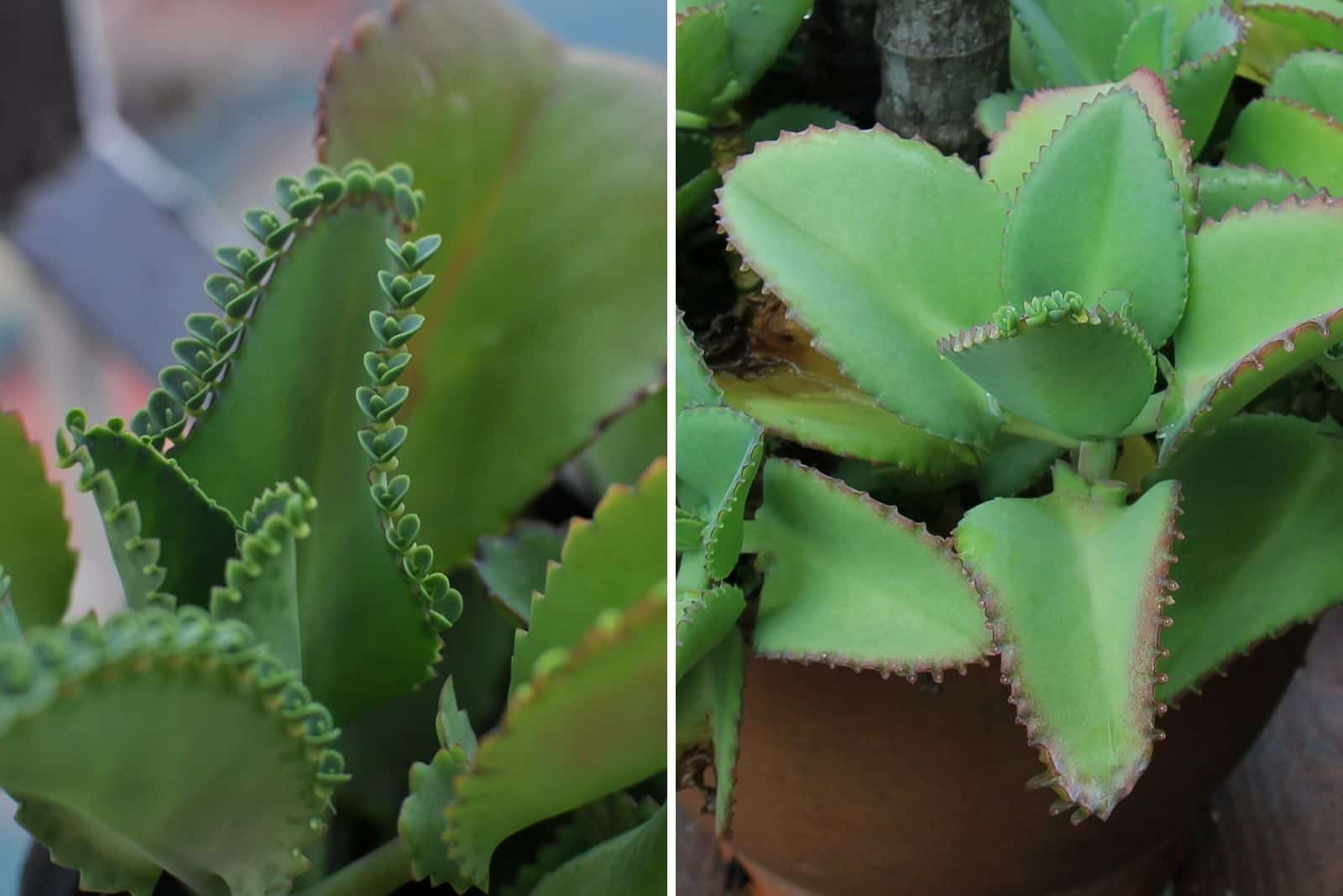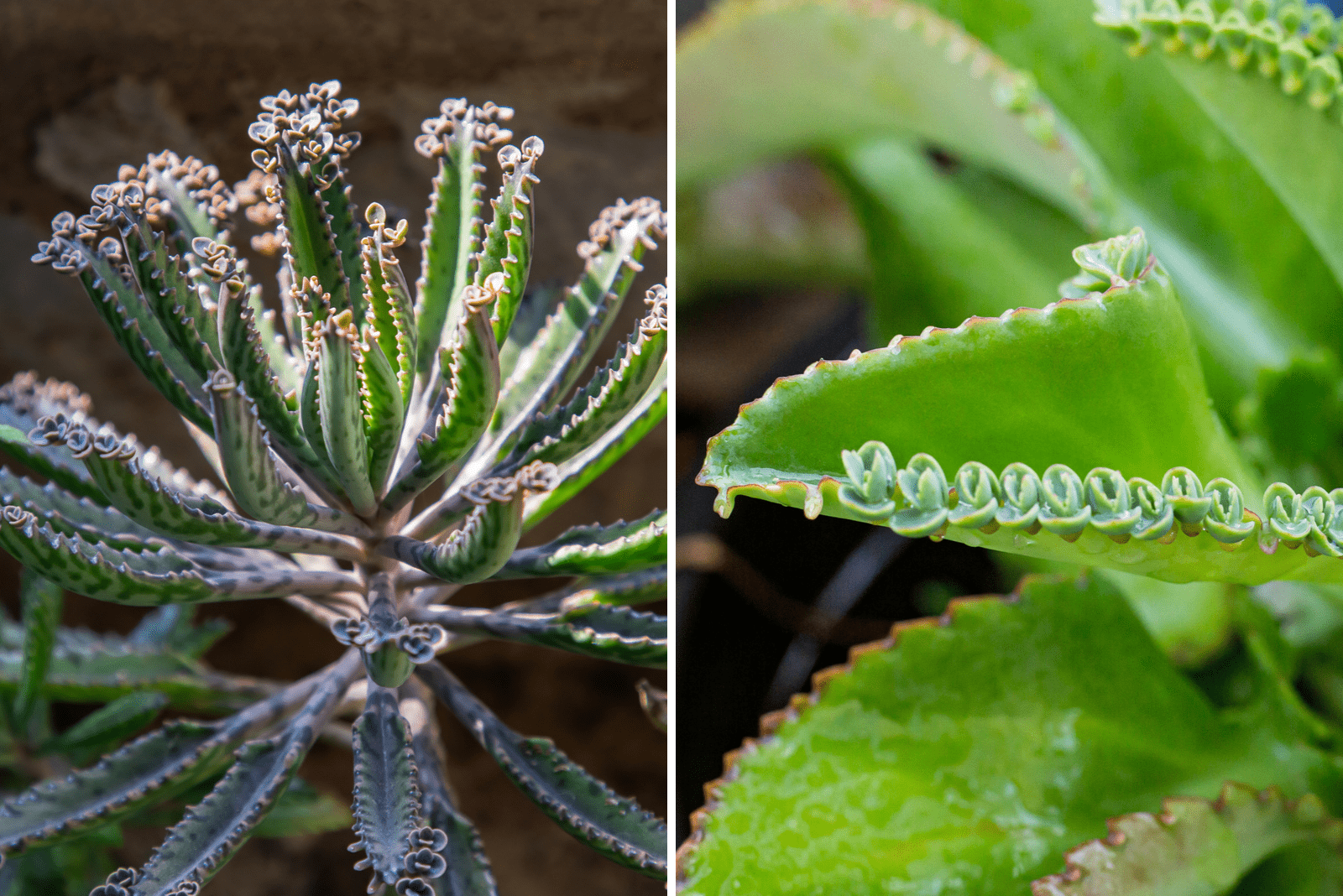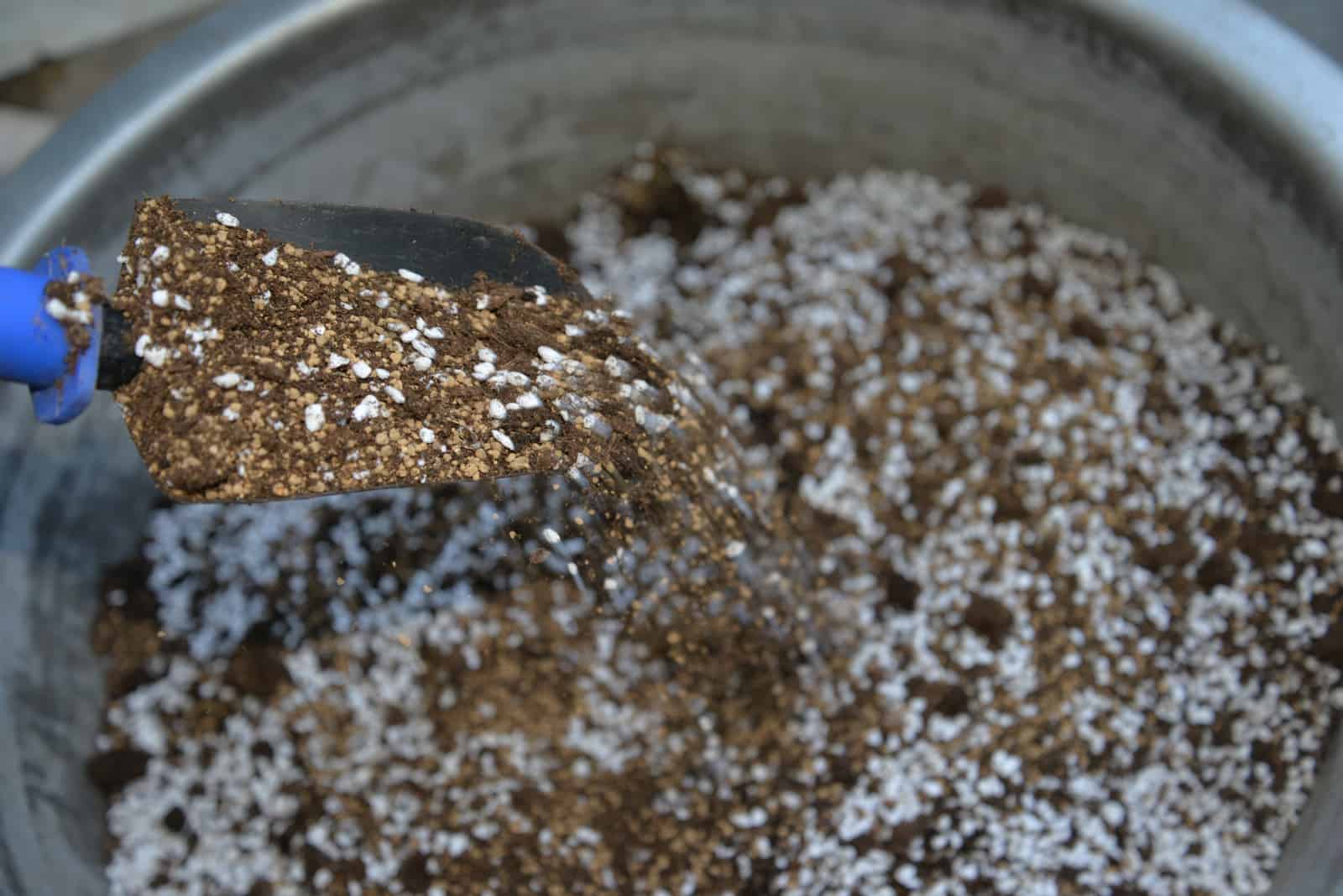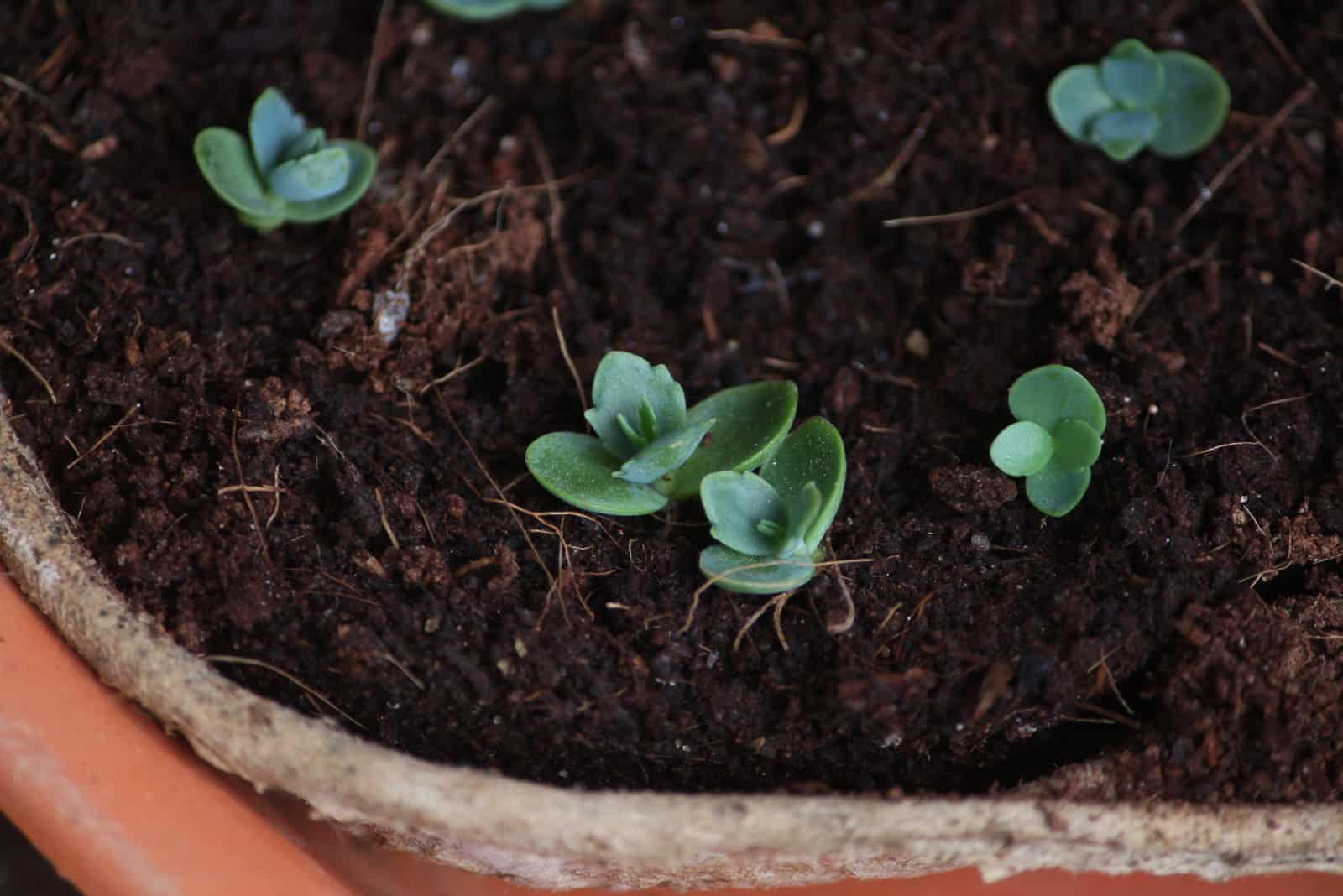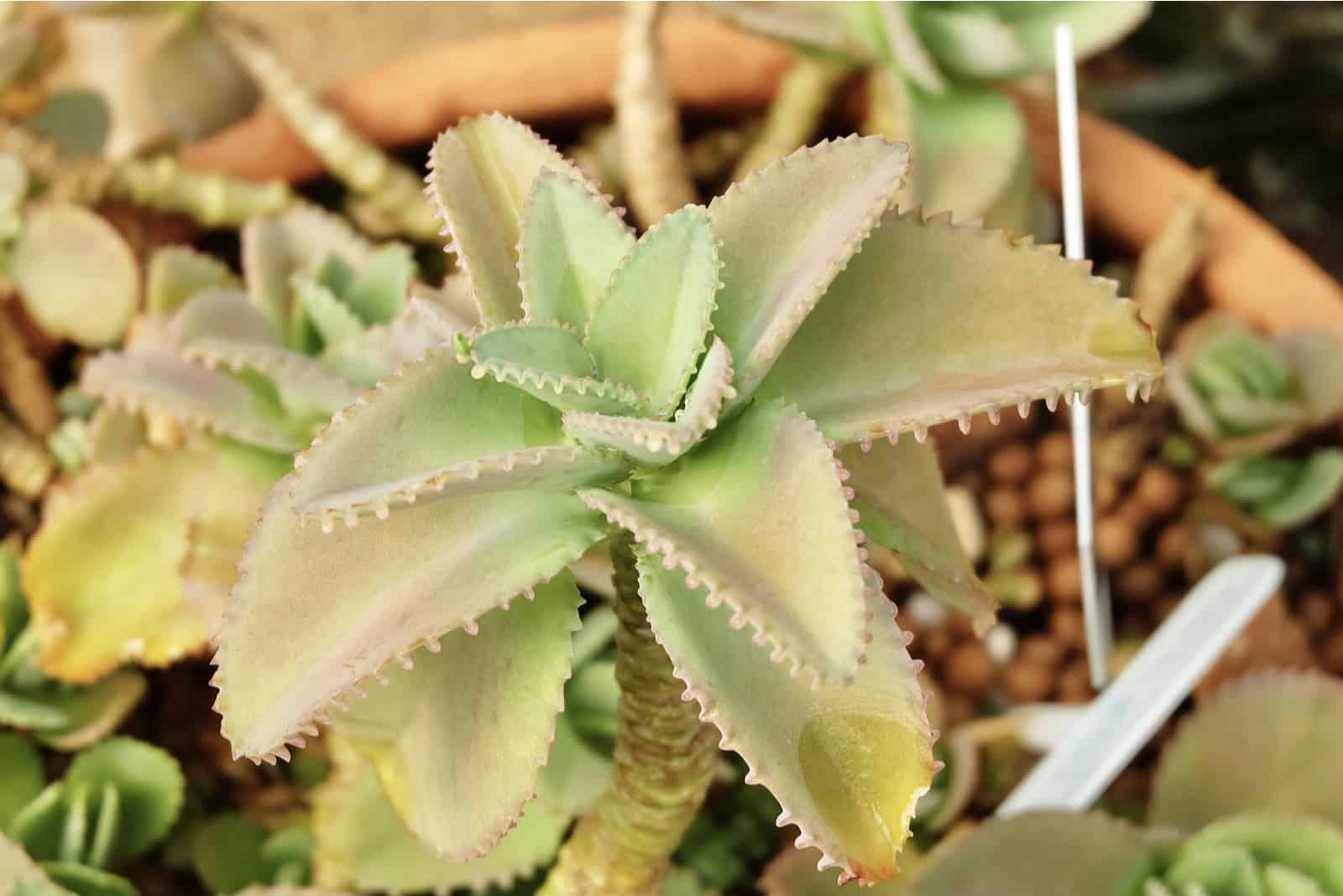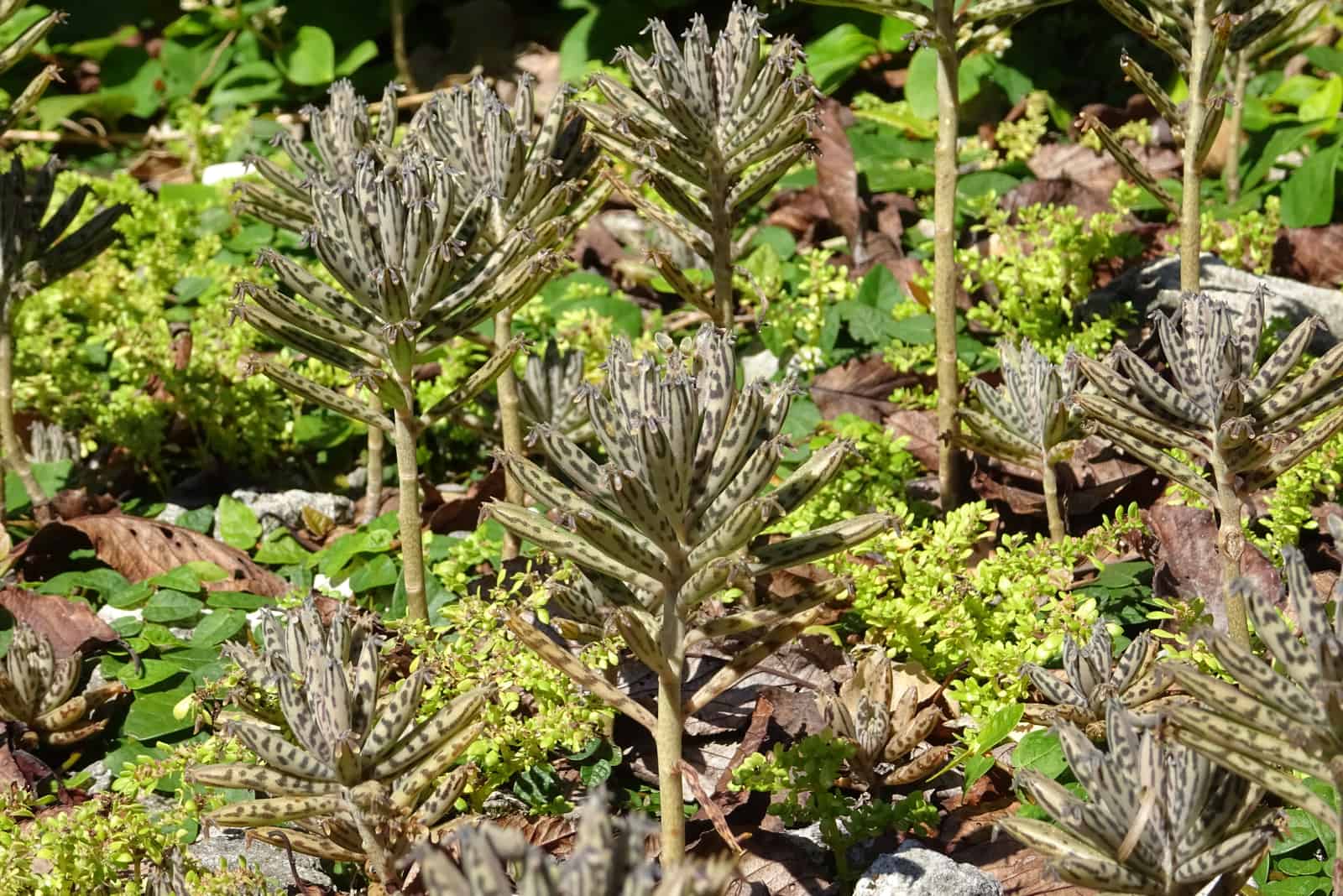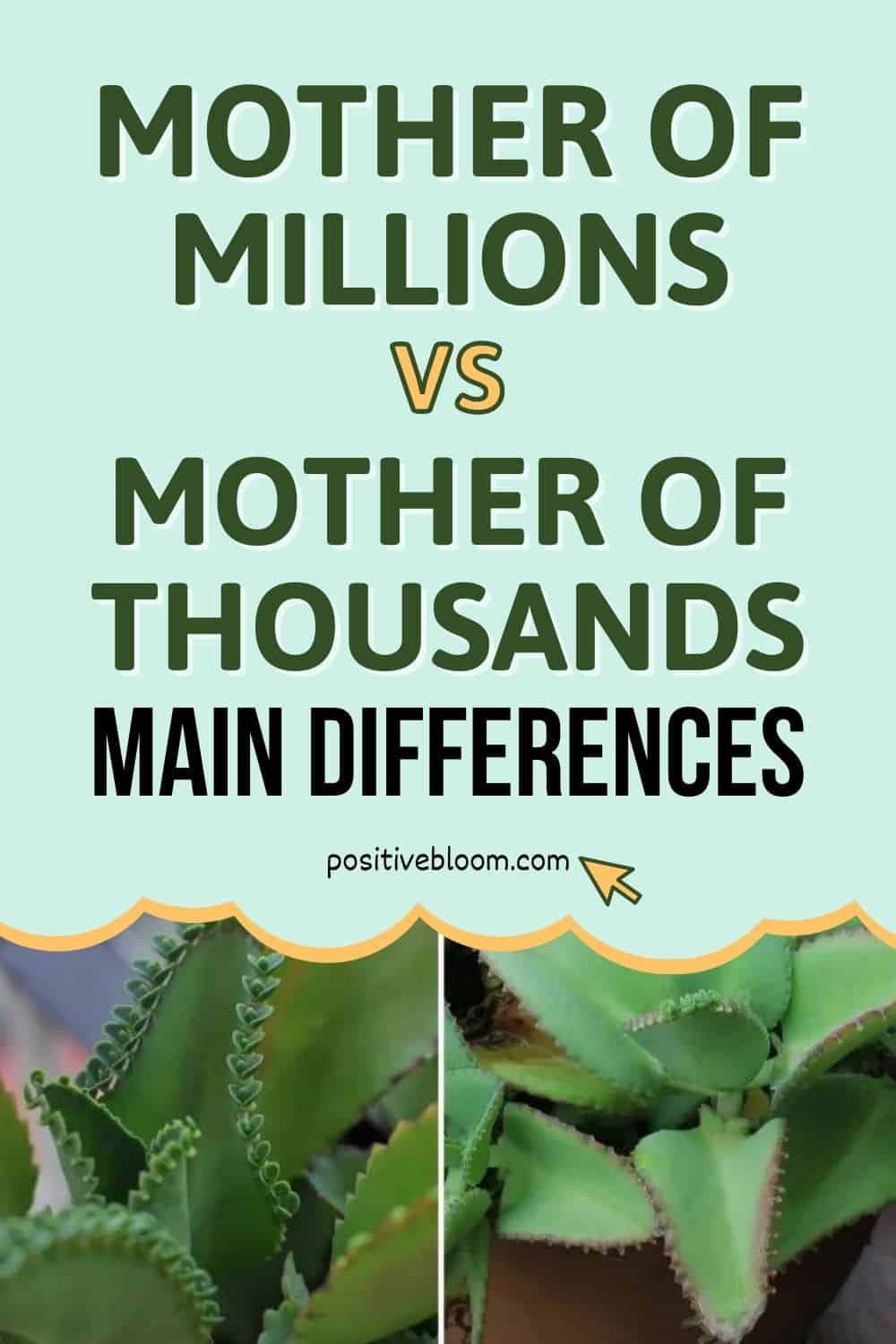Mother of Millions and Mother of Thousands are both succulent plants that have been widely grown as decorative indoor plants.
People often can’t distinguish one from the other due to the remarkable resemblance between these two plants; it is also thought that the Mother of Thousands plant is a hybrid, made by crossing Mother of Millions with another plant.
However, that is not the case.
Not only do these plants have similar looks, but they also have various common names that bring a lot of confusion – the scientific names also vary!
They are both considered to be a part of the Kalanchoe genus, but lately they have been categorized into the Bryophyllum genus (which was thought to be a part of Kalanchoe genus)… pretty messed up, I know.
To learn the differences and similarities between these plants, check out our analysis of Mother of Millions vs Mother of Thousands plants!
Mother of Millions vs Mother of Thousands: Differences
The key difference when it comes to distinguishing between these two types of plants is the shape of their leaves, followed by their different growth habits.
Mother of Millions, scientifically known as Kalanchoe delagoensis, have somewhat narrow leaves when compared to the Mother of Thousands plant. They form at least four leaves from the same node, and they have tiny plantlets at the end of their leaves.
These baby plantlets have the ability to grow wherever they touch the ground, and quickly produce little baby plants, which is why these plants are considered to be dangerous invasive weeds in some areas, like Australia and Africa.
Mother of Thousands, scientifically known as Kalanchoe Daigremontiana, produces broader leaves that have a shape like a tear. When compared to the Mother of Millions plants, they grow two leaves in pairs, so opposite from one another on the same stem.
What’s interesting to notice is that in this type of plant, the leaves will actually rotate so that the new leaves that have grown are able to receive enough sunlight for further growth and development!
Instead of growing plantlets at the leaf tips, the edges of the leaves have little ridges that will turn into baby plantlets, and they are very abundant. These plantlets have seeds that can spread easily, which is the reason why these plants are also considered to be invasive.
In spite of their similarities, these two plants have different growth habits.
For instance, the Mother of Thousand plant has a central stalk that grows upwards to reach for the sun, while the Mother of Millions plant has a few stalks coming from the same plant that will develop patches that look like bushes.
To sum up, our Mother of Millions vs Mother of Thousands analysis of differences, we have created a table that is easier to follow, so check it out below.
[table id=86 /]
Mother Of Millions vs Mother Of Thousands: Similarities
Now that we have covered the differences, let’s look at the similarities between these two plants and learn how to take care of them.
Both plants originate from Madagascar, and they have numerous different names, which often pose problems in differentiating between them.
For instance, the Mother of Millions plant is also known as Devil’s backbone and the Chandelier plant, while Mother Of Thousands is known as a Mexican hat plant and Alligator plant.
Mother of Millions and Mother of Thousands are both known for being fast-growers that are able to adapt to all sorts of environments; these types of succulents are drought tolerant and quite easy to take care of, which is why they are perfect houseplants for all the gardener newbies out there!
If you want to post your succulents on Instagram or Facebook, use these inspiring succulent quotes and funny puns as captions.
Care Requirements
If you’ve got yourself a new Mother of Millions and/or Mother of Thousands plants, follow the care instructions below to keep your plants happy and healthy!
I have to warn you at the beginning, that these are very invasive species, they grow new plants like crazy (no wonder they are called Mothers of millions and thousands), so you shouldn’t keep the pot with these succulents in close to other plants.
Now, let’s dive in!
Soil Requirements
Both Mother of Millions and Mother of Thousands plants thrive in loose and well-draining soil. You can buy a potting mix for cacti and succulents that contains perlite, pumice and sand, which enables it to easily dry out.
Avoid using Universal potting soil since this contains lots of ingredients that are not well-draining, and that actually retain moisture, like peat moss or loam.
Light Requirements
They absolutely love direct sunlight throughout the day! You can place your plants near the window or outside to let them be sunkissed all day long.
Being able to easily adapt to any kind of environment, they can also adapt to receiving indirect light; although sometimes Mother of Thousand plants can look a bit “leggy”, with lots of space between the leaves.
This is not the healthiest version of the plant, however, it is not the end of the world and your plant will still continue to grow and produce new leaves and platelets.
Water requirements
When it comes to water requirements, the same thing applies for all succulents – you should water succulents heavily and not that frequently.
I would suggest that you let the soil completely dry out before watering it again, because your mother plants are drought tolerant and love having dry soil instead of soggy.
If you don’t mind getting your hands a bit dirty, you can use your fingers to check the soil; you can use wooden sticks as well, or you can simply lift the pot and if it feels heavy, then the soil is still probably moist.
Avoid over watering at all costs, as it can lead to root rot. I would recommend you to buy a pot with drainage holes at the bottom — however, succulents are a type of plants that don’t need drainage holes .
Temperature & Humidity
As we previously mentioned, these types of succulents can survive harsh conditions – this also refers to the temperature and humidity. They can tolerate hot weather, as well as mild frost and wet climates.
However, I would suggest that you keep them at a temperature range from 20 to 28 degrees Celsius, and don’t let the humidity levels drop to below 20%. Bear in mind that these plants will propagate more rapidly when humidity levels are higher.
Fertilizer Requirements
Being able to grow almost anywhere, we can conclude that they don’t often require fertilization.
If you want to encourage your plant to produce healthy leaves and platelets, then add balanced, liquid fertilizers every three months during the growing season – usually from March to September.
Propagation
If you are a beginner gardener and haven’t propagated any plants before, don’t worry! Mother of Millions and Mother of Thousands plants are the perfect ones to start with and learn the propagation process.
Remember we talked about how these species can easily spread and become invasive? Well, that makes this whole process of propagation a lot easier!
We will take you step by step and explain what to do in each step, just to make sure that your propagation will be successful!
- Prepare the container in which you are going to grow your new baby plant.
- Put the potting soil in the container – you should use a succulent potting mix.
- Then, take some plantlets and put them in a container with about 1 cm space between them.
- Take some water and spray the soil and the tiny plantlets as well, however, don’t spray them too much, to avoid having soggy soil.
- After you have successfully planted the small platelets, you should cover the pot with a plastic wrap to lock in the heat and moisture.
- Place your new baby plant in a sunny location; for instance, near a window that gets enough sunlight throughout the day.
- Water them frequently to keep the soil moist – you can also spray the water instead of pouring it on.
- Soon, you will be able to see new sprouts! After the plant has grown about 2.5 cm, you can transplant it into another container. You can use a terracotta pot, however the type of pot won’t affect the growth of your plant.
I wouldn’t recommend that you plant Mother of Million and Mother of Thousands outdoors, as they can become invasive and spread throughout the entire neighborhood! Your plant will just enter the neighboring garden without even knocking first. Just imagine the conversation between you and your neighbor – “Sorry, my plant escaped into your backyard”.
To avoid this, plant them into pots and keep them far from the rest of your houseplants.
Bear in mind that you can pick the platelets off of Mother of Millions and save the seeds – they can stay viable and propagate after a few years of being properly stored.
For clearer instructions, you can follow this video:
Repotting
You will have to repot your Mother of Millions or Mother of Thousands into a larger pot once they become rootbound and provide them with more space to keep them happy and healthy.
There are a few signs you can check for to see if your plant needs repotting: roots coming out of the drainage holes on the bottom of your pot, the soil drying too quickly and poor drainage, or overall stunted growth.
If you have spotted any of these, then it is time for repotting!
Just be careful and follow the instructions below.
- First, you should go and buy a new larger pot that contains drainage holes on the bottom.
- Take out your succulent plant carefully from its current pot.
- Remove the soil from the roots – you can either shake it off, or put it under a running faucet. This way, you will be able to investigate the roots and look for diseases (like mushy brown roots).
- Fill one-third of a new pot with a succulent potting mix, and you can also put pebbles at the bottom before pouring in the soil.
- Then, put your plant in the new pot and make sure it grows to approximately the same height as it did in the previous pot.
- Fill out the rest of the pot with the same potting mix, and place it in a sunny location.
- You should water thoroughly to make this new adjustment a bit easier for your plant
Pruning
Being fast growing plants, your Mother of Millions and Mother of Thousands will be needing frequent pruning.
Not only will pruning keep your plant healthy, but it will also encourage the new growth of beautiful green leaves!
You can pinch off any dead leaves because they won’t produce any plantlets, so there is no point in keeping them; and you can also cut the part of the plant above the leaves and use that cut to propagate (however you won’t be needing this because there are more than enough plantlets for propagation).
Common Problems
Even though this plant is known for being very hardy and tolerant to all kinds of environmental inconveniences, the Mother of Millions plant and Mother of Thousands plant might have certain problems.
Proceed with your reading to find out what these problems are and how to deal with them.
Toxicity
Unfortunately, both of these plants are considered to be extremely toxic when ingested in large amounts – according to the ASPCA (The American Society for the Prevention of Cruelty to Animals), these plants are especially harmful to animals and pets, so make sure to keep the little ones away from your plant!
They are not proclaimed as dangerous weeds in Australia for no reason – in 1997, around 125 cattle died because they grazed in an area where Mother of Millions had spread. This happened in New South Wales, however, an invasion of poisonous Kalanchoe in Australia causes major issues for animals and pets.
All this toxicity happens because of one single chemical, called bufadienolide. This substance is highly concentrated in the flowers, and slightly less in the stems. If this substance is ingested, it can cause cardiac arrest and stomach issues.
Overwatering
As previously mentioned, these types of succulents are susceptible to overwatering. Though they can grow in a wet climate, they don’t like having soggy soil!
Too much watering can lead to root rot, which can affect the overall health of your plant. You might notice that the leaves are starting to turn yellow, which is usually an indicator of overwatering.
To prevent this, simply water your plant less frequently and make sure to check if the soil has dried before watering it. Remember that the plants prefer having dry rather than soggy soil.
Invasion
Yes, we had to include invasion.
Invasion is a major problem when it comes to the Mother of Million and Mother of Thousands, especially if they are grown outdoors… your new plant might wander into the neighbor’s backyard!
They spread easily because of those tiny plantlets that can easily fall on the ground and grow a brand new plant; then this new plant grows plantlets and the saga continues.
Another issue that might occur is self-sowing – the plantlets from your potted plant can fall into the same pot, causing new plant growth in an already small space. To avoid this, just pick the fallen baby plantlets from the pot and you are good to go!
Pests
Mother of Million and Mother of Thousands are sadly not toxic to pests and insects! Since these plants grow big and juicy leaves, they attract all those annoying pests like mealybugs and aphids. Some scale insects can easily attach to your plant and steal its nutrients too.
To prevent pest infestation, you can spray the leaves with neem oil or introduce some beneficial insects, such as ladybugs, to fight your battles. Scale insects might be tricky to get rid of, try using cotton swabs and dip them in a rubbing alcohol to scrub them off.
Diseases
The one disease that is common in these types of plants is fungal root rot, which is caused by overwatering. This disease will eventually kill your plant, so make sure to provide it with well-draining soil and water it less frequently.
Frequently Asked Questions
1. What are other Kalanchoe varieties?
If you are considering buying Mother of Millions or Mother of Thousands plants, you can check out other Kalanchoe varieties too and expand your succulent collection.
- Kalanchoe laetivirens, also known as Big Momma
- Kalanchoe delagoensis, also known as Mother of Millions, Devil’s backbone and Chandelier plant
- Kalanchoe gastonis-bonnieri, also known as Donkey Ears, Miracle Leaf, and Tree of Life
- Kalanchoe tubiflora
- Kalanchoe fedtschenkoi, also known as Gray Sedum and Amethyst scallops
- Kalanchoe pinnata also known as Goethe plant, and Cathedral bells
- Kalanchoe marnieriana or Lavender scallops
- Kalanchoe Daigremontianum also known as Mother Of Thousands, Mexican hat plant and Alligator plant.
2. How big does a Mother of Millions get?
The Mother of Millions plant is a single stem plant that can usually grow from 20 to 28 inches tall. However, it is a fast-growing plant and it can reach almost 3 feet tall if not dealt with properly, that is – if the plant is not pruned and it has adequate conditions to grow.
However, there are plenty of succulent varieties that can grow tall, you just have to provide them with enough space and proper plant care!
3. Is Mother of Thousands toxic?
Yes, Mother of Thousand and Mother of Millions are both plants that contain a toxic chemical called bufadienolide, which can cause cardiac arrest and stomach issues.
Bufadienolide is highly concentrated in flowers, and a little less so in stems – however, both can cause problems if ingested.
They are invasive and toxic at the same time, which poses issues for cattle that are grazing in Australia, which is where Mother of Millions is proclaimed as dangerous weeds.
4. Can you Grow Mother of Millions and Mother of Thousands indoors?
Both of these plants can be grown indoors; as a matter of fact, they should be grown indoors as houseplants because of their invasive nature – seriously, they can take over an entire neighborhood.
Both types of succulents are magnificent plants that can adapt to almost any kind of environment, and are pretty easy to take care of – perfect houseplants for beginner gardeners.
Make sure to put your potted succulent away from the rest of your indoor plants, as they can drop plantlets in nearby pots and spread.
Final Thoughts
Even though it can be pretty hard to detect the differences between Mother of Millions vs Mother of Thousands, we have covered everything you need to look for in order to be able to finally distinguish one from the other.
However, if you are not quite there yet, don’t worry – everything takes time, you just have to carefully look at the leaves and the plantlets on them.
Remember – Mother of Millions grows a couple of leaves from the same node, with tiny plantlets growing at the leaf tips; while Mother of Thousands grows leaves in pairs, with plantlets growing all over the edges of the leaves.
Pay attention to the leaf shape as well, because the Mother of Millions plant has somewhat narrow leaves when compared to the wider leaves that the Mother of Thousand plant produces.
You won’t make a mistake buying either of them!
Just make sure to provide them with well-draining soil and avoid over watering; be aware of their invasive nature – remove the plantlets from your pot, and nearby pots if they have accidentally fallen, to prevent the spreading of your new succulent.
That’s all folks!
Like this post? Share or pin it for later!

